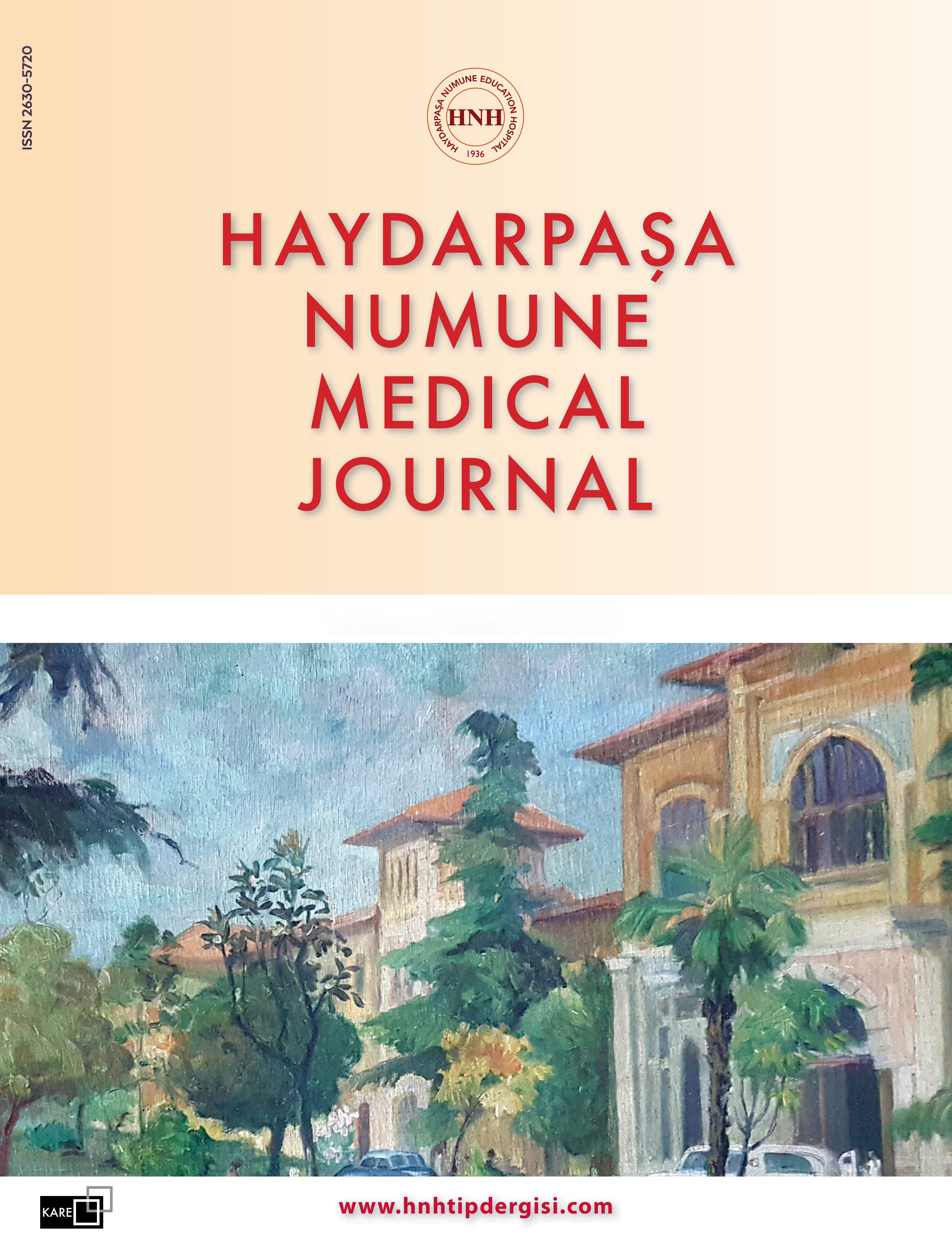Tumefactive Demyelinating Lesions: A Case Series of 11 Patients and Review of The Literature
Mustafa Efendioğlu1, Tuğçe Kızılay2, Ruziye Erol Yıldız2, Devran Suer2, Zerrin Karaaslan3, Cemile Handan Mısırlı2, Erdem Tuzun3, Recai Türkoğlu21Department of Neurosurgery, University of Health Sciences Hamidiye Faculty of Medicine, Haydarpasa Numune Health Application and Research Center, Istanbul, Turkey2Department of Neurology, University of Health Sciences Hamidiye Faculty of Medicine, Haydarpasa Numune Health Application and Research Center, Istanbul, Turkey
3Department of Neuroscience, Aziz Sancar Institute of Experimental Medicine, Istanbul University, Istanbul, Turkey
INTRODUCTION: The aim of this study was to present the follow-up data of eleven patients with tumefactive demyelinating lesions (TDL) with pointing the challenges of differential diagnosis and indicate the possible prognostic features.
METHODS: In our study, a retrospective analysis was performed by collecting clinical, laboratory and radiological findings with the prospective follow-up of 11 patients with TDL who presented with at least one cerebral demyelinating lesion (> 2cm) and admitted to Haydarpasa Numune Training and Research Hospital between 2000-2020.
RESULTS: 72.7% of the patients were female (n = 8) and 27.2% were male (n = 3). There was a female predominance (F / M = 2.66) and the mean age of onset was 33.45 years (18-68 years). While TDL was the first neurological event in 9 (81.8%) of 11 patients, 2 patients (18.1%) had developed TDL after the diagnosis of multiple sclerosis (MS). Among 9 patients whose first neurological event was a tumefactive lesion, three of them were diagnosed with Neuromyelitis Optica (NMO), two patients with MS, and two patients with acute demyelinating encephalomyelitis (ADEM). Two patients were followed up as TDL with a monophasic course. The average follow-up period was 62.16 months (1-180 months).
DISCUSSION AND CONCLUSION: It is difficult to diagnose TDL by distinguishing it from other lesions, including brain tumors, with clinical and radiological findings. Detailed anamnesis, physical examination and magnetic resonance imaging (MRI) can eliminate the need for brain biopsy in patients for the diagnosis. Early diagnosis of TDL and aggressive immunomodulatory treatments may delay the progression to a second demyelinating event or clinically definite MS.
Tümefaktif Demiyelizan lezyonlar: 11 Olgu Serisi ve Literatür Derlemesi
Mustafa Efendioğlu1, Tuğçe Kızılay2, Ruziye Erol Yıldız2, Devran Suer2, Zerrin Karaaslan3, Cemile Handan Mısırlı2, Erdem Tuzun3, Recai Türkoğlu21Sağlık Bilimleri Üniversitesi Hamidiye Tıp Fakültesi, Haydarpaşa Numune Sağlık Uygulama ve Araştırma Merkezi, Beyin Cerrahisi Anabilim Dalı, İstanbul, Türkiye2Sağlık Bilimleri Üniversitesi Hamidiye Tıp Fakültesi, Haydarpaşa Numune Sağlık Uygulama ve Araştırma Merkezi, Nöroloji Anabilim Dalı, İstanbul, Türkiye
3İstanbul Üniversitesi, Aziz Sancar Deneysel Tıp Araştırma Enstitüsü,Sinirbilim Anabilim Dalı, İstanbul, Türkiye
GİRİŞ ve AMAÇ: Bu çalışmanın amacı; Tümefaktif demiyelizan lezyonu(TDL) olan onbir hastanın ayırıcı tanıdaki zorluklarını takip verilerinin eşliğinde sunulması ve olası prognostik faktörlerin özelliklerini ortaya koymaktır.
YÖNTEM ve GEREÇLER: Çalışmamız SBÜ Haydarpaşa Numune Eğitim Araştırma Hastanesinde; 2000-2020 yılları arasında en az bir serebral demiyelinizan lezyon (> 2cm) ile başvuran TDL olan 11 hastanın prospektif takibi ile klinik, laboratuvar ve radyolojik bilgileri toplanarak retrospektif bir analiz gerçekleştirildi.
BULGULAR: Hastalarımızın %72,7si kadın (n=8), %27,2si erkek (n=3) idi. Kadın üstünlüğü (K/E= 2,66) görülmekle birlikte ortalama başlangıç yaşı 33,45 yıl (min: 18 max: 68) idi. 11 hastanın 9unda (%81,8) TDL ilk nörolojik olay ile prezente olurken, 2sinde (%18,1) MS teşhisi konulduktan sonra TDL gelişti.
İlk nörolojik olayı tümefaktif lezyon olan 9 hastanın 3ünde Nöromiyelitis Optika(NMO), 2si Multipl Skleroz(MS), 2si Akut Dissemine Ensefalomiyelit(ADEM) tanısı konularak izlendi. İki hasta ise monofazik seyirli TDL olarak takibe alındı. Ortalama takip süresi: 62,16 ay (min: 1 ay, max: 180 ay) idi.
TARTIŞMA ve SONUÇ: TDL klinik ve radyolojik bulgular ile beyin tümörü dahil diğer lezyonlardan ayırt edilerek tanı konulması zordur. Ayrıntılı anamnez, fizik muayene ve MR görüntüleme, hastaların beyin biyopsisine olan ihtiyacını ortadan kaldırabilir. Erken teşhis ve agresif immünomodülatör tedaviler, ikinci bir demiyelinizan olayı veya klinik olarak kesin MS'e ilerlemeyi geciktirebilir.
Manuscript Language: English
















